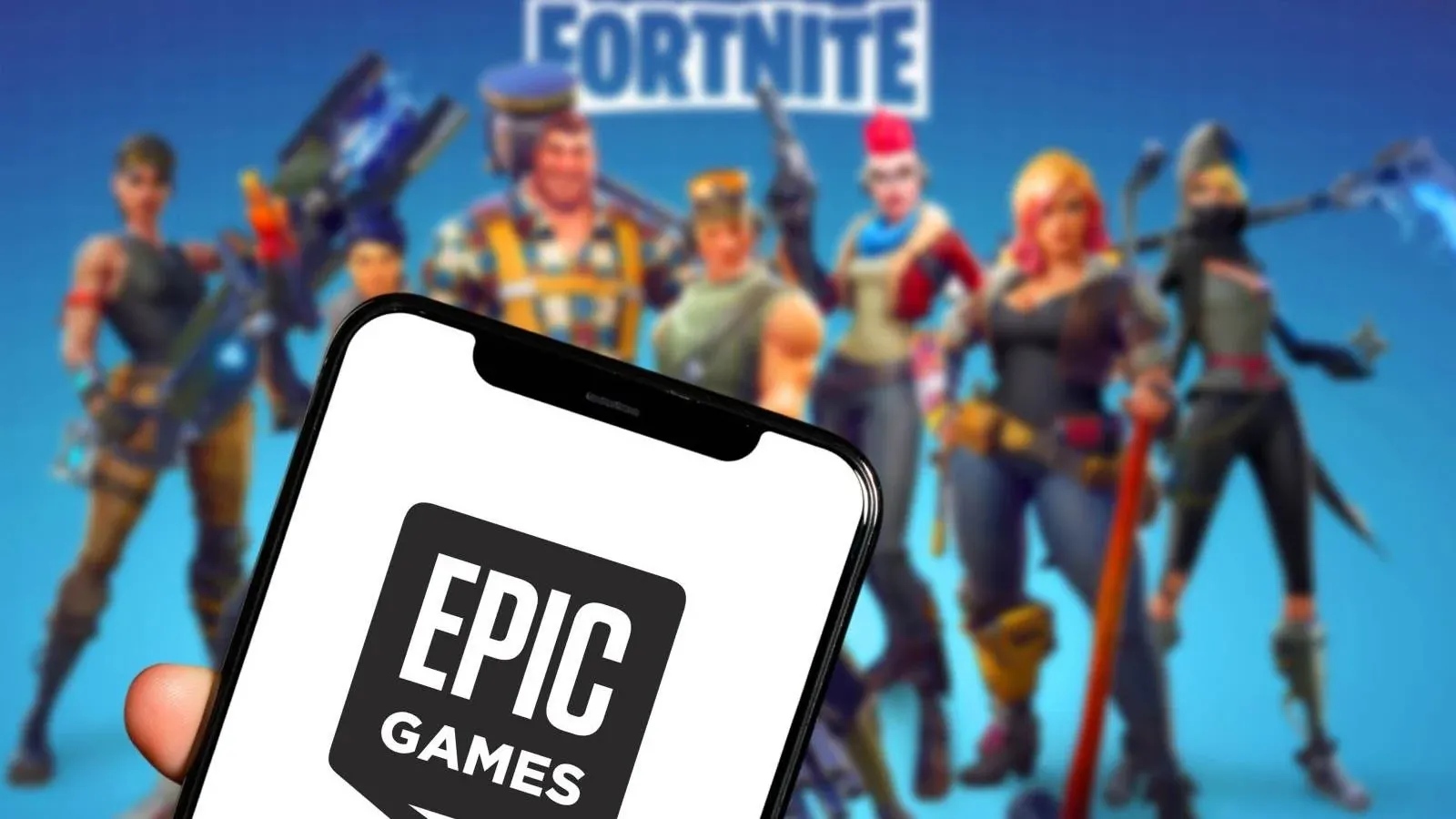Level Up Your Game Design with AI: With 20 Best Prompts
- August 18, 2023
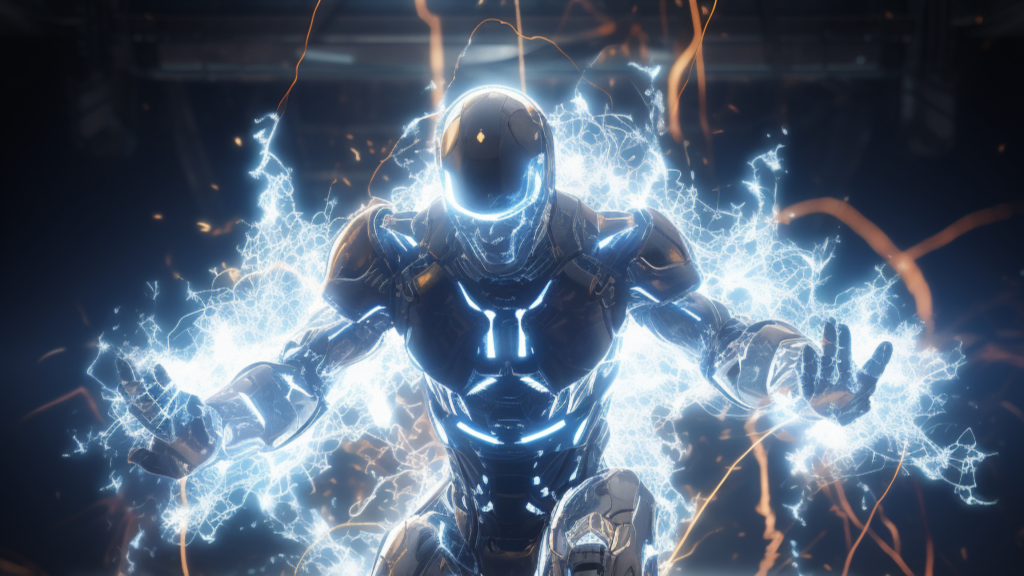
Hot posts 🔥
Start your free trial today
No credit card required
In this article 👇
As we know, AI has undeniably become the golden child of the tech world, and its footprint in game design is growing each day.
Imagine this: A platform where a character’s response is not based on pre-coded situations but on a vast range of potential human interactions, creating expansive game worlds in hours rather than weeks in just seconds.
That’s the power of AI in game design.
What is AI Art?
Before moving on to the prompt, you need to understand what AI art is. As we know, in traditional art, people use tools such as brushes, paint, and canvas.
In AI art, however, there are ‘tools’ that interpret, generate, or change artistic content through programs.
How Does AI Art Work?
At its core, AI art involves feeding a machine learning model, often of a type called a neural network, vast amounts of visual data. Once the model is trained on this data, it can create unique pieces of art by recognizing patterns and drawing upon its “knowledge.”
In other words, if we train an AI on thousands of Renaissance paintings, it will generate art that looks like it was painted during that period, even if it is completely new.
Creating Art with a Digital Brain
This journey as a game designer is both challenging and rewarding.
As you step onto this path, certain foundational understandings need to be established. Especially important is learning about the convergence of human creativity with modern technological prowess.
The age we live in is defined by the meeting of human ingenuity and AI. This collaboration has opened up new worlds of possibilities, especially in the field of game design.
These tools, powered by intricate AI algorithms, allow designers to breathe life into their visions in ways that were once deemed impossible.
But, while these tools are powerful, it’s crucial to remember that they are just that—tools. They exist to give you a new viewpoint and advance your creativity, not replace it.
A Glance at the AI Tools Shaking Things Up
There are lots of powerful tools that can conceptualize a full game storyline, but the most popular is Midjourney, which is an AI Discord bot that allows users to generate images based on the prompts they write.
It gives graphics a new life, and the industry is going crazy with this innovation. This interaction enables game designers to progress further into the new era of gaming, where only our imaginations limit our possibilities.
How Do I Start Using Midjourney?
Enough with the big talk. Let’s deep dive into how you can know the secrets of Midjourney’s magic.
I have to say that you need to know that MidJourney is more than a tool; it’s an ecosystem. With all commands at our disposal, we can dictate the tool to manifest our wildest game art dreams. It is revolutionary and has its quirks. But once you master the nuances, from setting up the perfect MidJourney style settings to adjusting resolutions,
You can generate everything from isometric pixel-art characters to sprawling game landscapes.
How to Setup a Midjourney Account:
- Visit the Website: Navigate to www.midjourney.com.
- Choose the Version: Click on the “Beta Version” option.
- Redirect to Discord: Your browser will redirect you to Discord.com.
- Accept the Invitation: Click on “Accept Invite” to join.
- Follow the Instructions on Discord: Once you’re in the Discord channel, follow the provided instructions to complete the setup.
- Start Using Midjourney: After completing the setup, you can start exploring and using Midjourney.
Understanding the prompts can be a little tricky when you are a newbie. Each tool has a unique way to be used, but if you want to be a master when creating game designs, you need to learn each parameter.
To use Midjourney, start with the settings. Type /settings in the chat. Every change turns features on or off. Before making any adjustments, make sure to look it up to understand it.
Thankfully, Midjourney provides a detailed parameter list for users. It is a good idea to do this before diving into the design part. They cover everything from quality to stylization. Here is an example:

Where Can I Find Inspiration for AI Game Art?
If you are seeking inspiration, you can look at different platforms. Like;
- Pinterest: It allows users to discover ideas, styles, and inspiration for multiple projects, from the characters to game app icons.
- Behance: Here, designers from various domains display their work, offering a deep dive into creative projects.
- Dribbble: Much like Behance, Dribbble is a space where designers share their portfolios, covering everything from graphic designs to art concepts.
- Midjourney Discord Channel: A hub of creativity where users generate AI-based images every second. On this channel, you can find inspiration, learn from, and engage with other enthusiasts.
Let’s Talk About Prompts
Let’s start with the Pre-production: As a designer, it all begins with prototyping various components, such as characters, gameplay mechanics, and interactive elements. Initiate this phase with storyboards, visual drafts, and interface designs. AI can simplify this process, and here’s a guide to crafting a game storyboard.
Here is one prompt:
“Sketch a game storyboard: a young explorer entering an ancient temple, navigating a broken bridge, deciphering wall etchings, and facing a temple guardian. Make it simple, black and white, suitable for a 1920×1080 display.’’
Here are the results:

Character Design
Moving on to characters, which are the most important design elements in games. Before AI, when creating characters, you’d start with a vision, sketch it out, or attempt to convey this mental image to an artist, which can sometimes be a game of hit or miss.
Now, we have AI generators. You input your idea, and it offers several visual designs. While it won’t always match your vision exactly, it provides a clear starting point.
By selecting the AI-generated designs you liked, you can give the designer a better idea of what you’re envisioning, making the entire process more efficient.
Here is what you should do:
Let’s say you are making a game in the future. The sun is dimming, and solar energy is scarce. Vicious power corporations control the remaining energy sources. Legends speak of a “Solar Core” that can recharge the sun, but it’s heavily guarded. Then your character should be a Robot Engineer.
Prompt Ideas:
- Robot engineer pixel art style
- Robot engineer in studio Ghibli style.
- Robot engineer in a retro-futuristic style.
- Robot engineer on a quest for the Solar Core.
Here is the result:

While those prompts are fairly basic, I’m confident that with a group of talented individuals like ours, we could craft even more detailed and nuanced ones.
Environment Design
There is no game without a world or a universe. In the past, designing such worlds, complete with their lore, history, and rules, was a lengthy and intricate process that began with rough ideas and layouts. However, with the advent of AI, we can now create any universe in seconds.
You can use AI for level design to create specific areas or stages through which players will navigate. It can also be employed to generate visual illustrations of environments, assets, and props. Moreover, you can design textures with detailed surfaces, giving objects either a realistic or stylized appearance.
Prompt ideas for different platforms:
- PC Game: Conceptualize a third-person survival game map to navigate a cybernetic raven through a post-cyberpunk city, evading robotic hunters in 3D isometric.
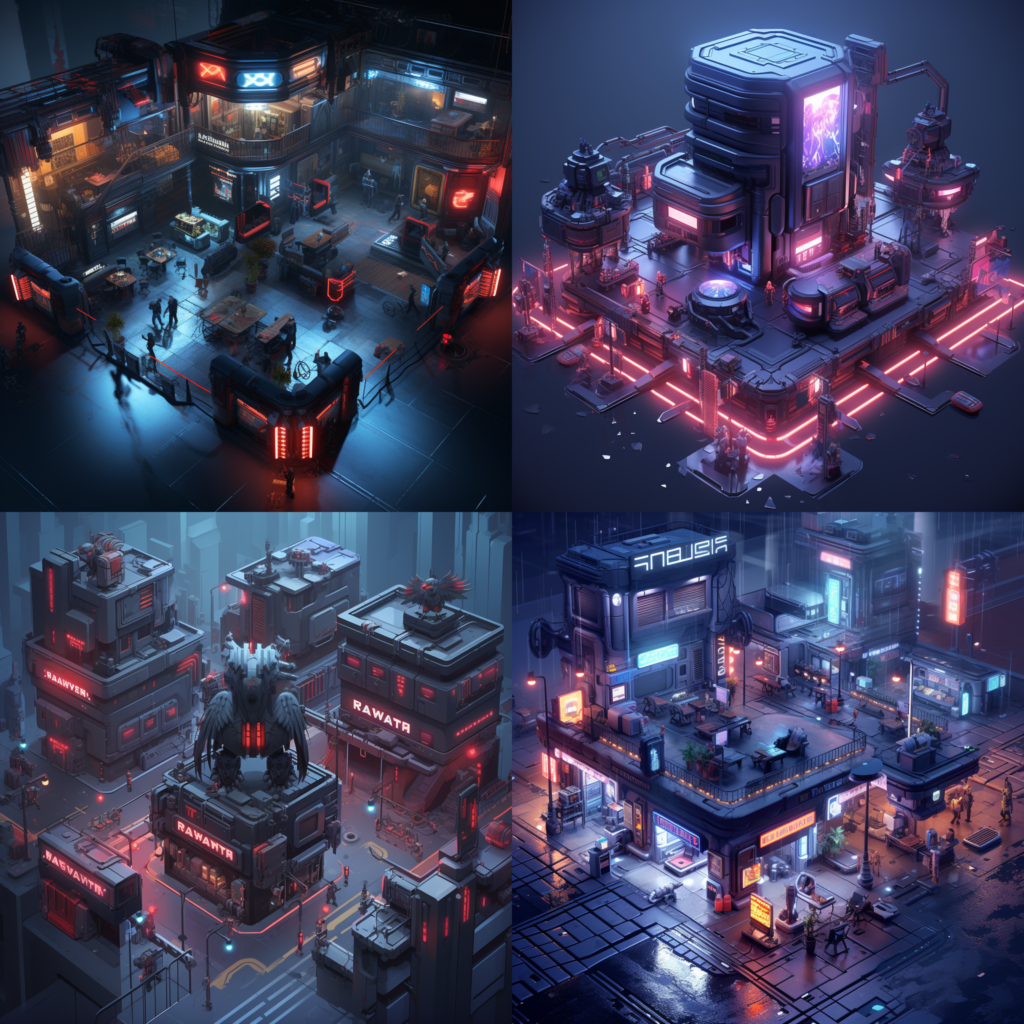
- Mobile Game: Create a cohesive 2D tileset for the ground surfaces in a mobile game, with seamless transitions between tiles in a captivating environment.
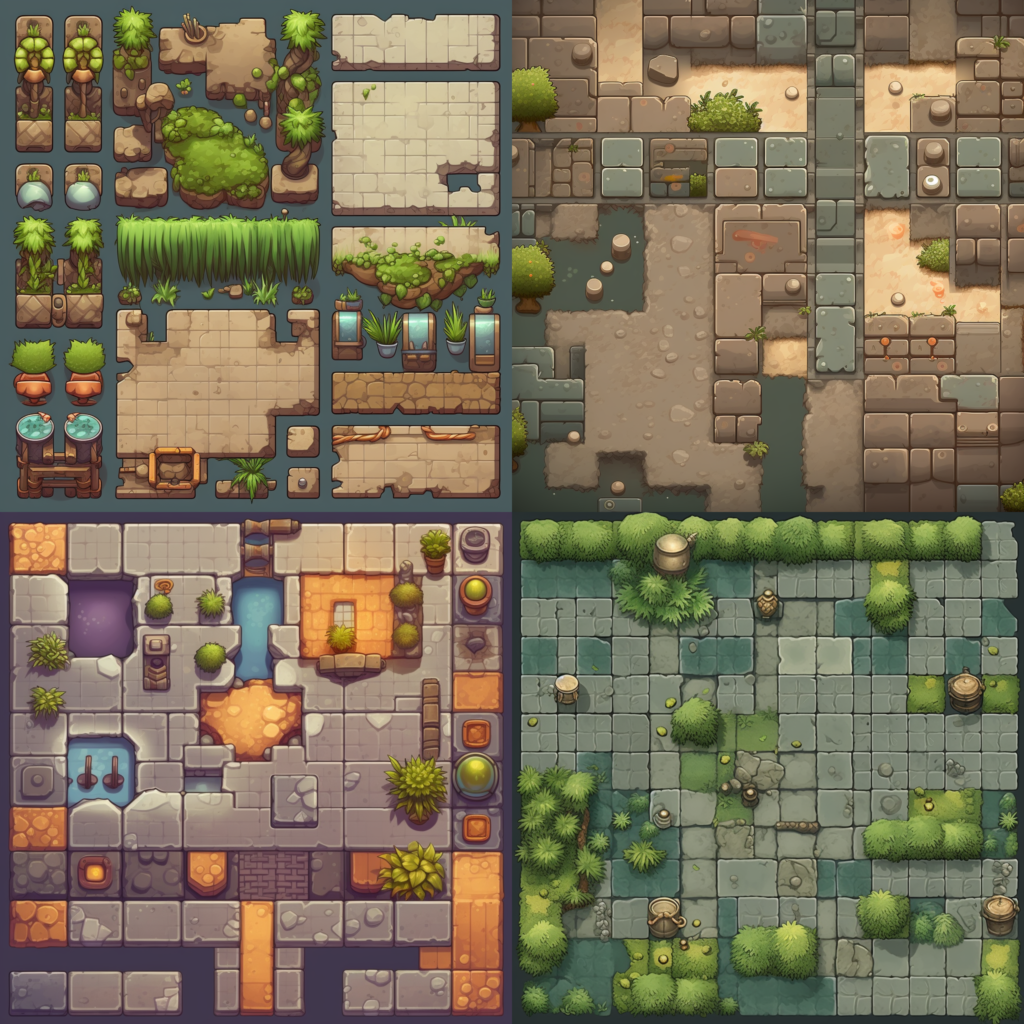
- Console Game: Pixel-style horror map location explores a pixelated, sinister mansion in a shadowy forest, its decaying walls etched with eerie sigils, as whispers and unseen footsteps haunt your every step.
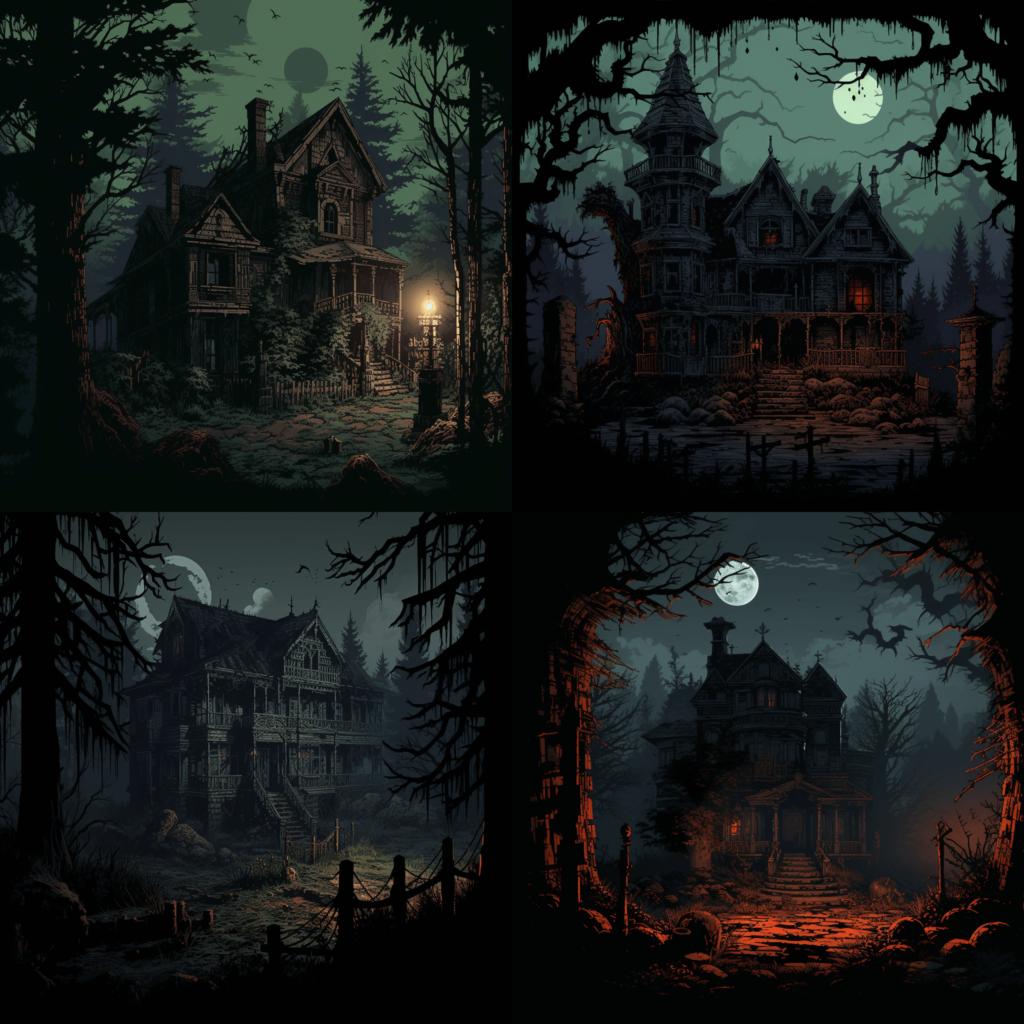
Game Assets
You can also generate game assets with Midjourney. Let’s say you’re creating a match-3 puzzle game and you want to design an in-game currency. You can use a similar prompt like this:
- 2D cute coin journey to the solar core begins.
- 2D cute coin fusion of retro-futurism and charm.
- 2D cute coin charmed with a simple isometric style.
- 2D cute coin compact coin in a charming and simple isometric.
Here are the results:
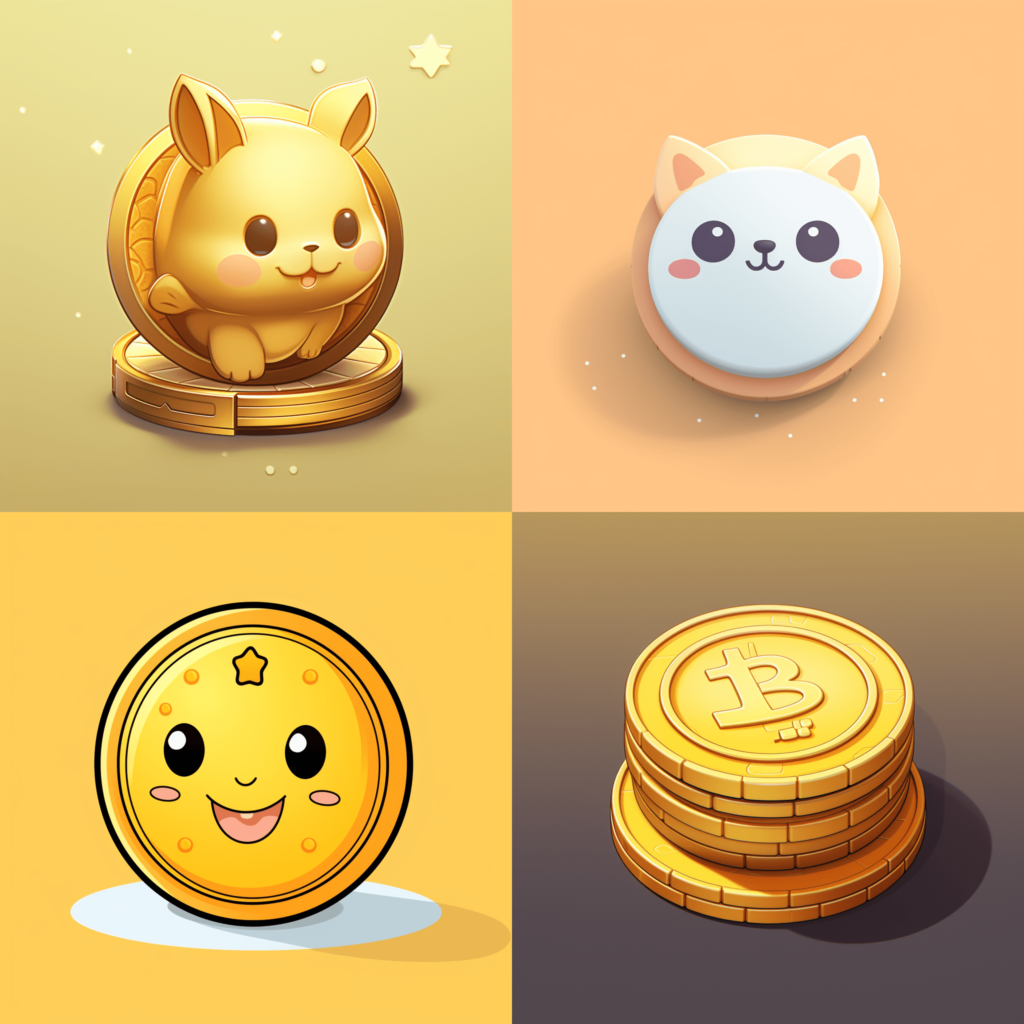
Texture
I also used the same game example for the create texture prompt.
- Pixel elegance elevates match-3 with meticulously crafted crystal textures.
- Pixel perfection design intricate pixel-art textures for captivating match-3 crystals.
- Crystal depths dive into pixel-textured mystic hues, enhancing your match-3 experience.
- Design pixel-art textures that embody mystic crystal facets, capturing a charmed realm’s essence match-3 puzzle game.
Here are the results:
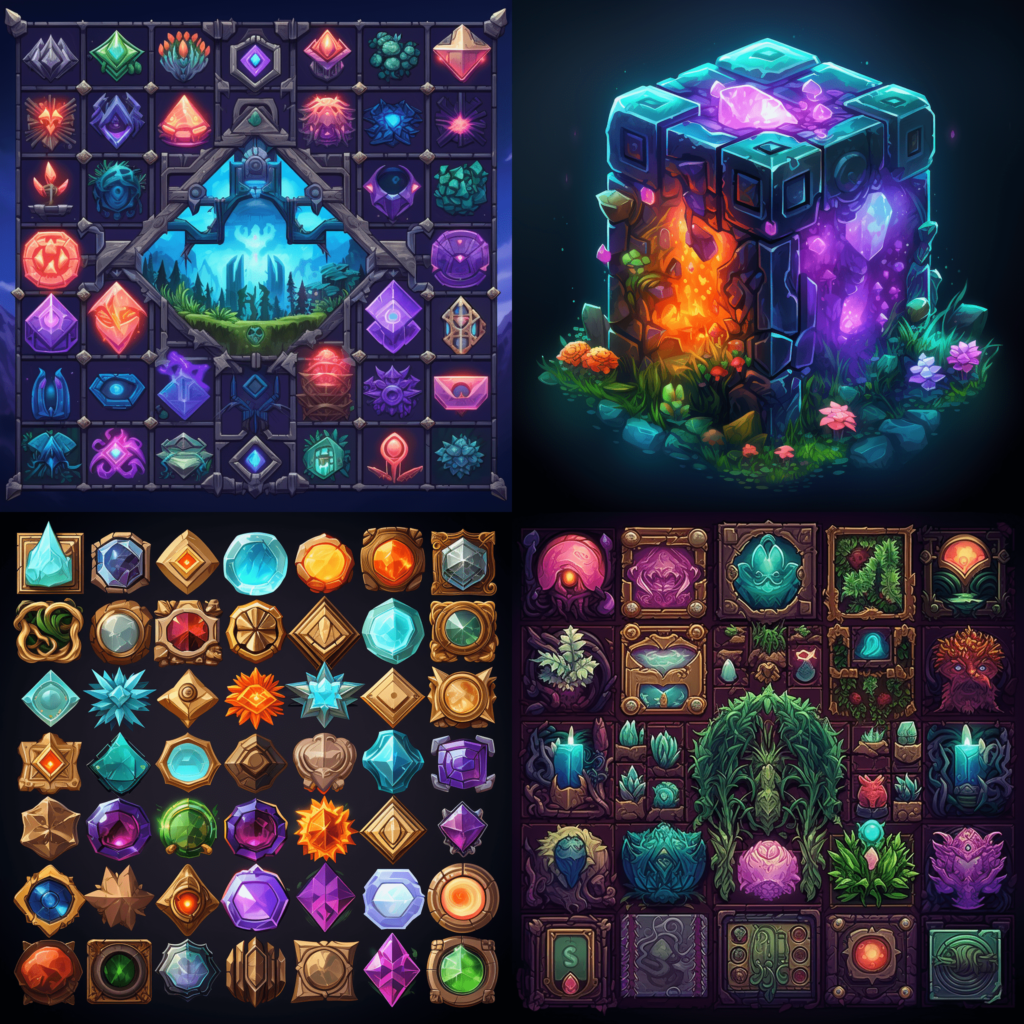
The UI & Icons
When you manually create icons, dealing with a thousand in-game items can take a long time. It makes games look similar when you use stock libraries. Instead, AI can depict items in your game’s style.
Here are some examples you can use to create a game icon or logo:
- Dress-maker app game icon that is pink such as a sewing needle, a spool of thread, and a stylish dress silhouette.
- Create a dynamic game app logo embodying basketball’s energy and vibrancy through iconic imagery and lively colors.
- Puzzle app game logo craft a captivating logo that embodies puzzling challenges with creative design and vibrant flair.
- Create a game app icon that conveys a sense of speed and excitement in car racing using sleek and fast-paced design elements.
Here are the results:

Here it is, everyone! As you can see above, I created an entire design within seconds using Midjourney.
Imagine how AI could revolutionize the game industry, empowering developers to craft more advanced and enjoyable games.
From the initial stages of production to designing app icons, it can bring your creative vision to life. With the right tools and clear prompts, the possibilities are limitless. Now let’s move on to the FAQ.
Question and Answer
Can I Use AI Art for the Game?
Absolutely! AI-generated art can be useful for game designers. From landscapes to characters, tools like PicFinder AI and MidJourney offer high-quality visuals that can boost the gaming experience.
How to Generate Game Art with AI?
Generating game art with AI involves using specialized platforms like PicFinder AI. By inputting specific commands or using pre-defined settings, developers can produce unique and dynamic art pieces suited to their game design.
Is AI Art Copyright?
This topic is so detailed it could be its own blog post. But I’ll get straight to the point: It cannot be copyrighted. According to the U.S. Copyright Office, anything created by non-humans, such as AI models, is not protected by copyright.
Can You Sell AI-Generated Art?
Yes, why not? Like any other form of art, if it resonates with people and evokes emotions, there’s someone out there who’d love to have it. The art world is a giant. There’s room for everyone even the new and the AI-innovated!
Conclusion
The advent of AI in game design signifies a monumental shift in how games are crafted and played.
Through the use of these tools, you can push the boundaries of creativity, creating experiences previously thought impossible. There are countless possibilities in the fusion of AI and game design.
As with any new technology, it brings challenges but also the promise of revolutionary advancements.
Games stand to gain immensely from keeping up with AI, so use it wisely, but don’t forget to add your human magic and creativity.
See you in the next blog; until then, stay safe 💙
We've plenty of other interesting resources for you

